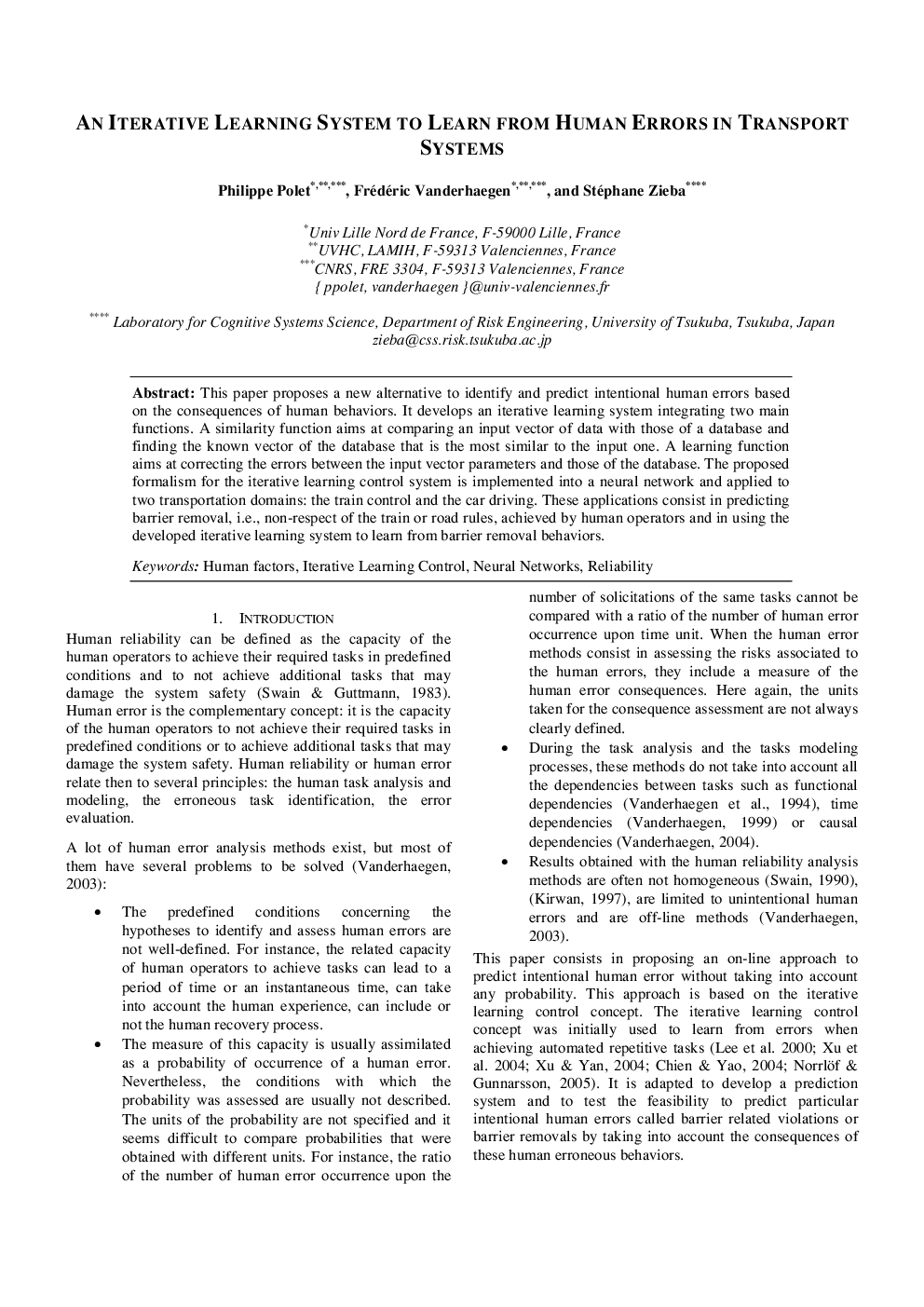| Article ID | Journal | Published Year | Pages | File Type |
|---|---|---|---|---|
| 709965 | IFAC Proceedings Volumes | 2010 | 6 Pages |
This paper proposes a new alternative to identify and predict intentional human errors based on the consequences of human behaviors. It develops an iterative learning system integrating two main functions. A similarity function aims at comparing an input vector of data with those of a database and finding the known vector of the database that is the most similar to the input one. A learning function aims at correcting the errors between the input vector parameters and those of the database. The proposed formalism for the iterative learning control system is implemented into a neural network and applied to two transportation domains: the train control and the car driving. These applications consist in predicting barrier removal, i.e., non-respect of the train or road rules, achieved by human operators and in using the developed iterative learning system to learn from barrier removal behaviors.
